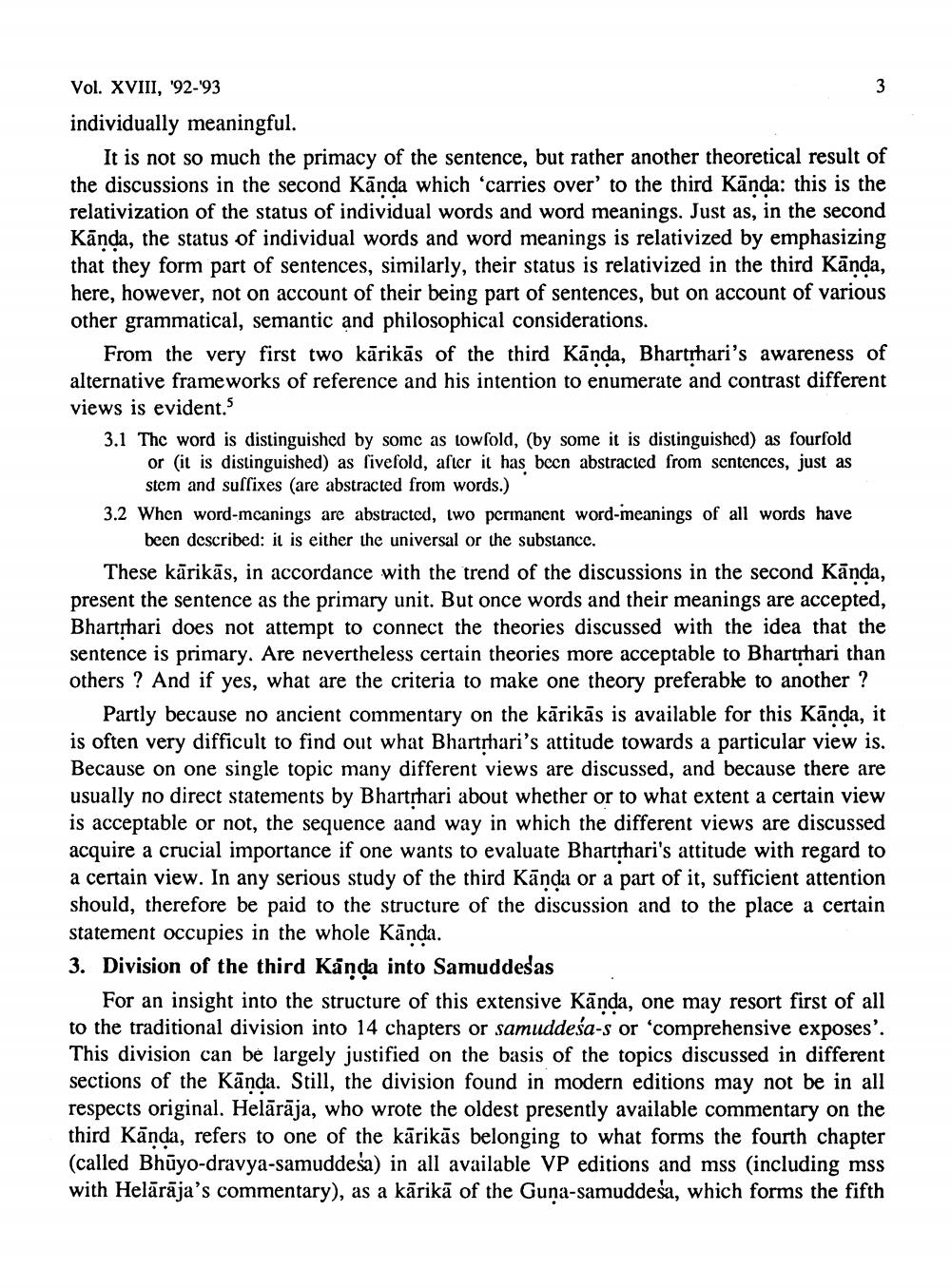________________
Vol. XVIII, '92-'93 individually meaningful.
It is not so much the primacy of the sentence, but rather another theoretical result of the discussions in the second Kānda which carries over to the third Kānda: this is the relativization of the status of individual words and word meanings. Just as, in the second Kānda, the status of individual words and word meanings is relativized by emphasizing that they form part of sentences, similarly, their status is relativized in the third Kānda, here, however, not on account of their being part of sentences, but on account of various other grammatical, semantic and philosophical considerations.
From the very first two kārikās of the third Kānda, Bhartrhari's awareness of alternative frameworks of reference and his intention to enumerate and contrast different views is evident. 3.1 The word is distinguished by some as lowfold, (by some it is distinguished) as fourfold
or (it is distinguished) as fivefold, after it has been abstracted from scntences, just as
stem and suffixes (are abstracted from words.) 3.2 When word-meanings are abstracted, two permanent word-meanings of all words have
been described: it is either the universal or the substance. These kārikās, in accordance with the trend of the discussions in the second Kānda, present the sentence as the primary unit. But once words and their meanings are accepted, Bharthari does not attempt to connect the theories discussed with the idea that the sentence is primary. Are nevertheless certain theories more acceptable to Bharthari than others ? And if yes, what are the criteria to make one theory preferable to another ?
Partly because no ancient commentary on the kārikās is available for this Kānda, it is often very difficult to find out what Bhartrhari's attitude towards a particular view is. Because on one single topic many different views are discussed, and because there are usually no direct statements by Bhartrhari about whether or to what extent a certain view is acceptable or not, the sequence aand way in which the different views are discussed acquire a crucial importance if one wants to evaluate Bhartrhari's attitude with regard to a certain view. In any serious study of the third Kānda or a part of it, sufficient attention should, therefore be paid to the structure of the discussion and to the place a certain statement occupies in the whole Kānda. 3. Division of the third Kända into Samuddesas
For an insight into the structure of this extensive Kānda, one may resort first of all to the traditional division into 14 chapters or samuddeśa-s or "comprehensive exposes'. This division can be largely justified on the basis of the topics discussed in different sections of the Kānda. Still, the division found in modern editions may not be in all respects original. Helārāja, who wrote the oldest presently available commentary on the third Kānda, refers to one of the kārikās belonging to what forms the fourth chapter (called Bhūyo-dravya-samuddesa) in all available VP editions and mss (including mss with Helārāja's commentary), as a kārikā of the Guna-samuddeša, which forms the fifth




